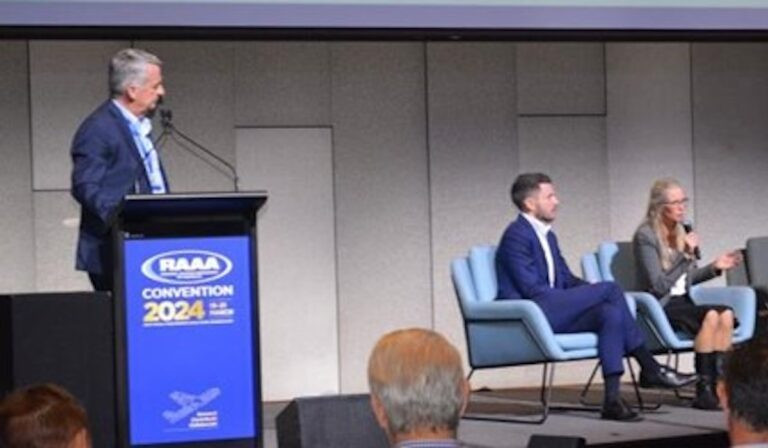Sustainability in aviation and the question of how to address it has never been more important. Technology plays a prominent role in this conversation, and rightly so. To achieve meaningful reductions in CO2, however, we also need strong collaboration in the industry and coordinated leadership. That is according to Alan Milne, CEO of Queensland-based Skytrans Airlines, which has recently been acquired by Avia Solutions Group the world’s largest ACMI (Aircraft, Crew, Maintenance, and Insurance) provider. Milne has emerged as a vocal advocate of more dialogue, knowledge sharing and innovation in order to make Australia’s aviation sector more sustainable.
Australia’s aviation sector and sustainability
The need for action on sustainability has never been more urgent, with jet fuel consumption in Australia forecast to increase by 75% in the next quarter of a century. According to Milne, key stakeholders from the sector are stepping up to this challenge. “Policymakers and regulatory bodies are playing their part. We have clear directions and clear goals, both from the ICAO and the Australian Government,” says Milne. “The ICAO has defined its long-term aspirational goal of net zero carbon emissions from international aviation by 2050. And the State Action Plan sets out specific focuses for airlines, fuel suppliers, airservices providers and airports to work towards this target.”
“Australia’s international carriers are setting a global example in terms of their sustainability policies, and I am proud that our regional airlines are also stepping up to the plate and proactively tackling this issue,” comments Milne.
Close collaboration is key
Milne believes that to realise the full potential of these efforts industry players must work closer together. He represents the Regional Aviation Association of Australia (RAAA) on the Australian Government’s Jet Zero Council, an advisory body of industry leaders focused on achieving net zero. He also played a significant role at a recent RAAA conference on sustainability, moderating a session on sustainable aviation.
“Events like the RAAA conference are crucial in my opinion,” says Milne. “It brought together important regulators like the Civil Aviation Services Australia (CASA) and most of the major airlines in the country with 450 delegates focused on the sustainability of the industry.
According to Milne, collaboration is the key to unlocking successful sustainability initiatives. “It’s about critical mass,” he explains. “Once a high enough proportion of the industry is taking substantial action and pulling in the right direction, the rest will follow and when this happens, rapid and impactful change is possible.”
Opportunities for a greener aviation industry
What might these rapid, impactful changes look like? According to Milne, hydrogen electric propulsion and sustainable aviation fuels (SAF) will play the largest role. “Naturally, finding greener energy sources to power our aircraft is critical,” he comments. “We are closer than many realise to achieving this. The SAFs being developed have the potential to reduce life cycle carbon emissions by 80%. Boeing has just announced a partnership with Wagner Sustainable Fuels to grow Australia’s SAF industry, so the right steps are being taken.”
“Hydrogen electric propulsion is another exciting technology that is making giant leaps forward,” continues Milne. “For example, our partner Stralis has its first flight using a hydrogen electric powered Bonanza scheduled for 2025. These technologies used to be dreams for the future, but they are already becoming a reality.”
Milne also believes there is great potential in leveraging AI-powered optimisation tools to provide marginal gains that add up to a significant reduction in CO2. “There is an ambitious target for Airservices Australia to reduce CO2 emissions per flight by an average of 10 per cent by 2030, so incorporating these technologies will be integral to achieving the target.”
“Bring together more efficient planes flying optimised routes powered by low-carbon energy, you can start to envisage substantial reductions in the CO2 emissions across the aviation industry. It all starts with cooperation within our industry, sharing best practices, taking coordinated action, and encouraging each other to take the steps needed to transform our industry for the better.”




